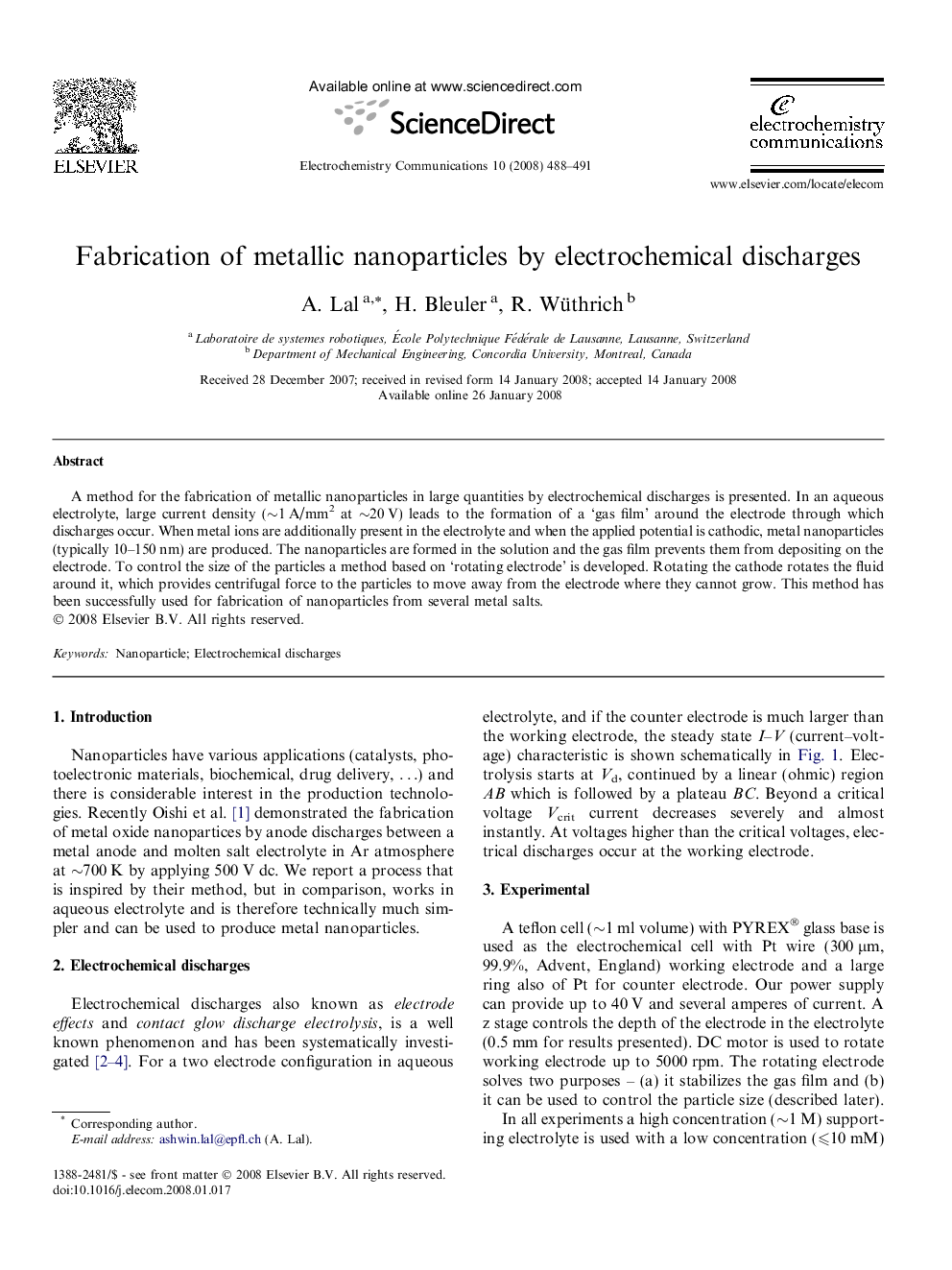| Article ID | Journal | Published Year | Pages | File Type |
|---|---|---|---|---|
| 181672 | Electrochemistry Communications | 2008 | 4 Pages |
A method for the fabrication of metallic nanoparticles in large quantities by electrochemical discharges is presented. In an aqueous electrolyte, large current density (∼1 A/mm2 at ∼20 V) leads to the formation of a ‘gas film’ around the electrode through which discharges occur. When metal ions are additionally present in the electrolyte and when the applied potential is cathodic, metal nanoparticles (typically 10–150 nm) are produced. The nanoparticles are formed in the solution and the gas film prevents them from depositing on the electrode. To control the size of the particles a method based on ‘rotating electrode’ is developed. Rotating the cathode rotates the fluid around it, which provides centrifugal force to the particles to move away from the electrode where they cannot grow. This method has been successfully used for fabrication of nanoparticles from several metal salts.
